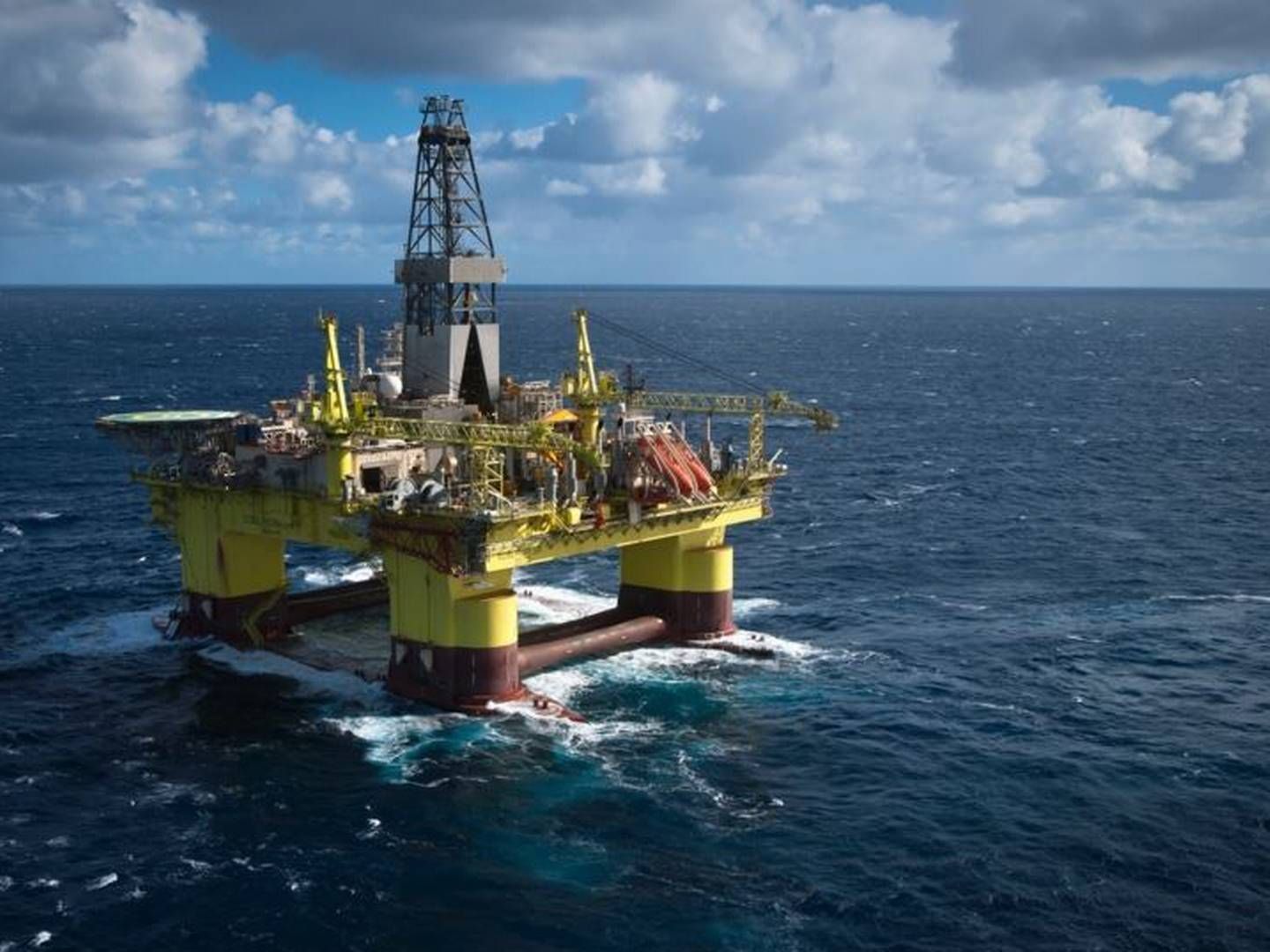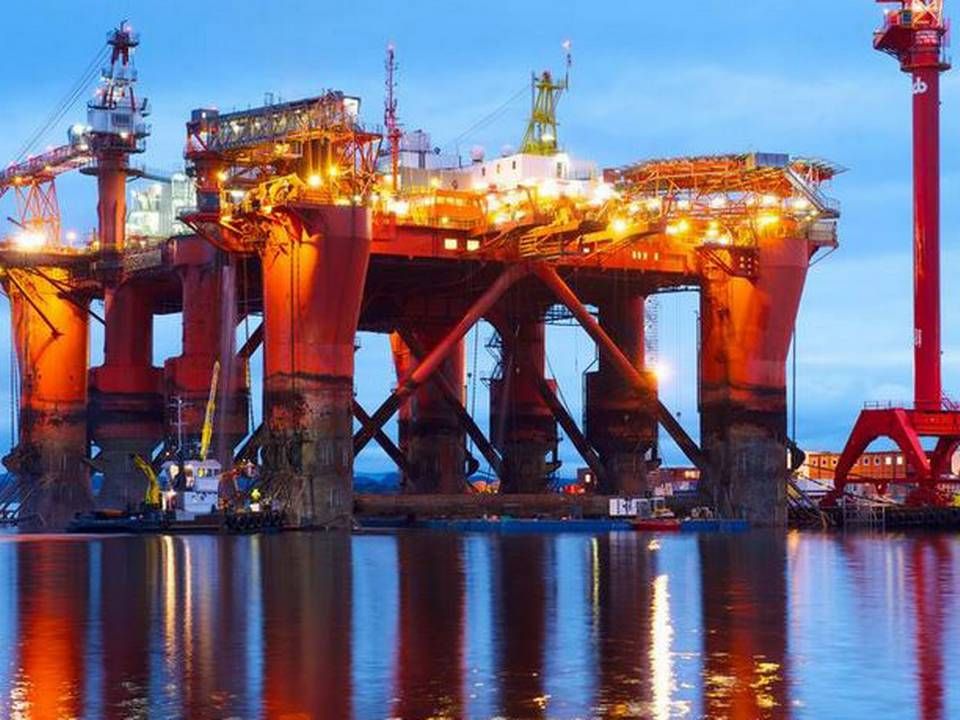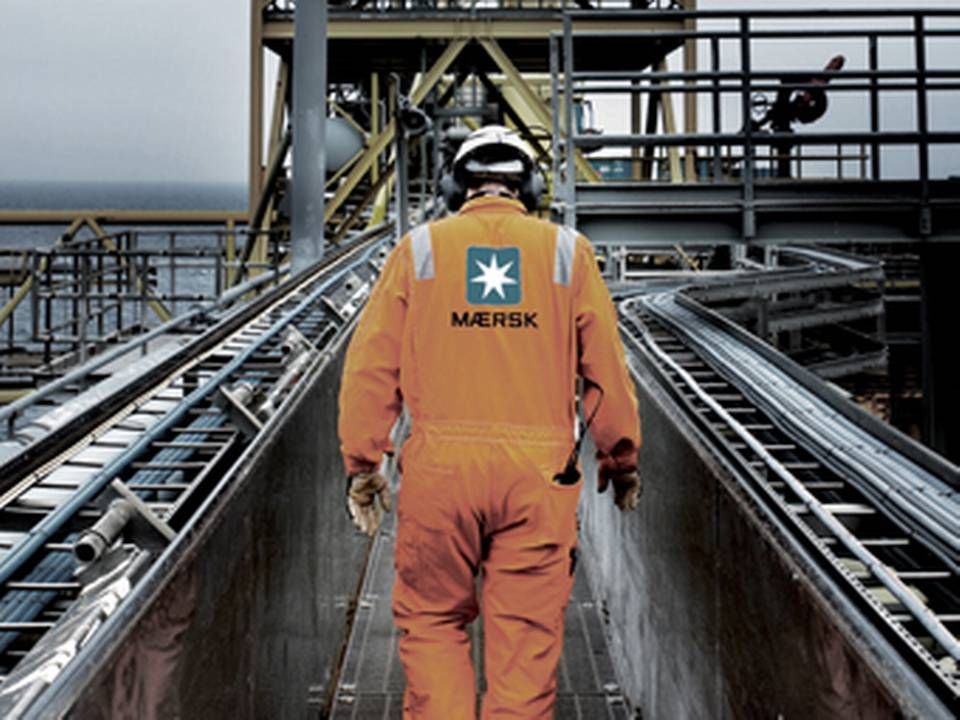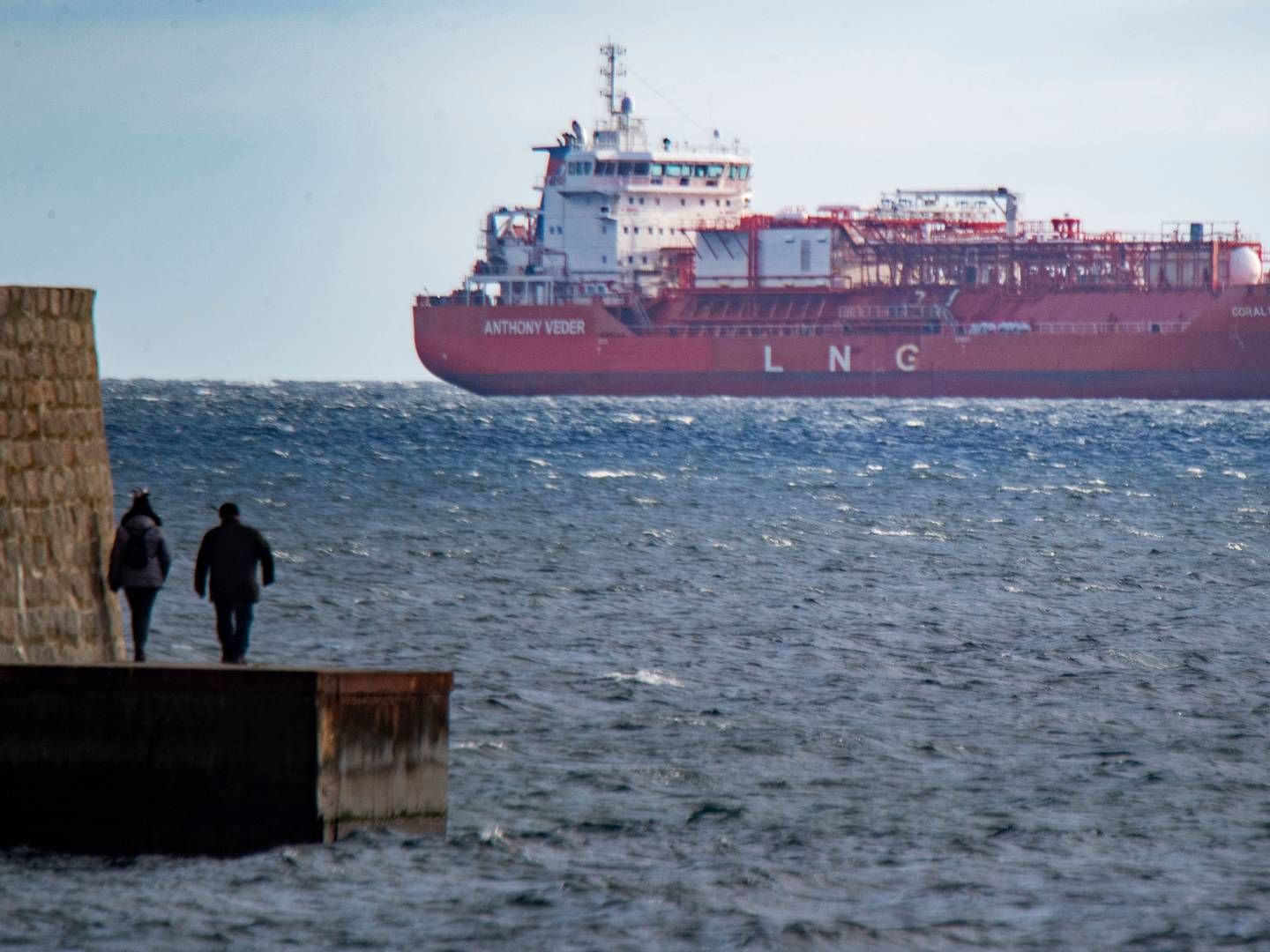Clarksons Platou: Offshore carriers must idle ships on large scale
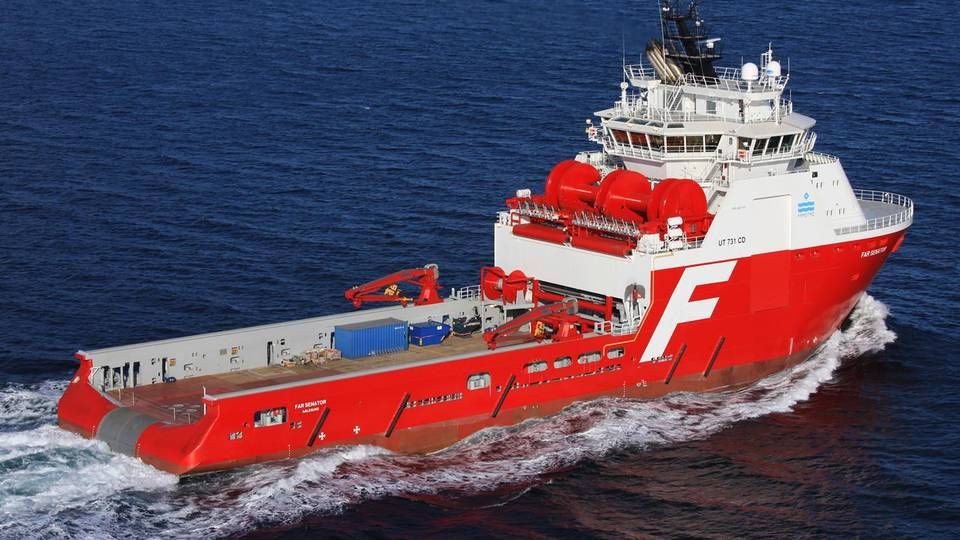
OSLO
A worst case scenario is currently unfolding for the world's offshore carriers, which since the beginning of the year have been hit hard and real by oil industry's massive budget cuts. The sliding oil price and the industry's mass cuts in E&P activity (exploration and production) have made supply carriers across the globe idle ships, as there is quite simply no work for them in the market - especially in the North Sea, where around 40 vessels are currently idled. But it is going to take more for the market to return to balance, says Erik Tønne, chief analyst at Platou Offshore, when ShippingWatch visits the office in Oslo.
Norwegian lender worried for offshore vessels
"With the current orderbook, if everything is delivered, we project an overcapacity of 500 to 600 vessels during 2016. So we believe we're looking at an overcapacity of around 15-20 percent," he says, referring to offshore supply vessels, which covers smaller anchor handling tug supply vessels (AHTS) as well as Platform Supply Vessels (PSV).
The brokerage firm's scenario points to an existing offshore vessel fleet of close to 3,000 ships. Add to this an orderbook of 554 vessels, set for delivery in 2015 and 2016. Demand currently looks set to reach around 2,500 vessels in 2016, and if carriers can live with a utilization rate of some 85 percent of the fleet, the sector still needs to significantly reduce the number of vessels, explains Erik Tønne, stressing that the scenario is still fraught with a large degree of uncertainty.
"The orderbook stands at 15-16 of the existing fleet that still needs to be delivered. There were ordered just as many ships in 2014 as in 2013, in spite of the fact that the offshore crisis began in the summer 2014," he says.
Many offshore vessels without employment in the North Sea
Quick reaction
This means that something will have to change drastically for the offshore carriers if they want to make solid profits. Between 100 and 250 of the ordered vessels will likely be postponed or canceled at the yards, while more ships will be idled, he says. And this process is already well underway. In recent months, the crisis has forced several carriers, including Siem Offshore, Farstad Shipping and Maersk Supply Service, to take action and idle vessels.
30 supply ships without work in the North Sea
"The carriers reacted fairly quickly in 2015. This actually happened a bit quicker than we anticipated, even though it took some time before they got started for real. The situation in the market is now so painful to the companies that they're fairly quick to idle vessels. We're noting conditions, in both the contract and spot market, at such low levels that there is no profit to be made by deploying the vessels," says Erik Tønne.
Try a free 40-day trial subscription to ShippingWatch
Spot rates in the North Sea have now dropped to below the carriers' operating expenses (opex), and are thus completely miserable, as Tønne says. And carriers are also not signing many long-term contracts, and this is very much a consequence of the overcapacity, as the massive supply of ships means that oil companies would rather charter ships on spot than on short contracts.
Maersk Supply Service under daily pressure from customers
There has, however, been a few contracts for modern PSVs at daily rates of GBP 7,500 to 8,500, which clocks in slightly above opex. In these cases, carriers are trying to lower costs by, for instance, replacing parts of the crew, explains Erik Tønne.
All markets are affected
Meanwhile, the competition has also changed. Some oil companies opt to renew contracts with bigger suppliers that they worked with in the past, thus preventing smaller players from bidding on this business. Last week Brazilian oil company Petrobras, which is currently plagued by a comprehensive corruption scandal, sent notifications to all its subcontractors to renegotiate existing long-term contracts. This process has yet to be completed, but Erik Tønne finds it likely that several carriers will reduce their rates, perhaps in exchange for compensation in the form of longer contracts.
Try a free 40-day trial subscription to ShippingWatch
And the North Sea is not the only place where carriers are idling ships. The same thing is happening in the markets off the coast of Africa, Asia-Pacific and off Mexico. And according to Erik Tønne, more are underway.
"The companies say that when a ship has finished a contract, it will be idled. We expect to see more idled vessels," he says, adding that this will become a challenge for the port regions.
Word at the moment says that it has become increasingly difficult to find a place to berth the ships along the coast of Norway, from Arendal in the southeast and up to Stavanger on the west coast.
"They're starting to look for alternative locations, and this will increase going forward," says Erik Tønne.
Small appetite for rigs
Low employment of rigs is another explanation for the weak market conditions. In the North Sea, there are currently many rigs without contracts which are idled. This month, the largest rig company in the world, Transocean, fired 250 employees in Norway because the company was unsuccessful in obtaining contracts for the company's rigs Transocean Spitsbergen and Transocean Searcher. Maersk Drilling has also been forced to announce layoffs in Norway, where up to 190 employees may lose their jobs due to a lack of contracts for the two rigs. And Wednesday of this week, Statoil broke its contract with the rig, COSL Pioneer, more than a year early.
Long-term crisis forces Siem Offshore to new debt plan
In addition, there will be several rigs without contracts when their current contracts expire, and this will also impact the vessels that service the rig market.
"The rigs are serviced by two-four vessels, so for each one that is idled, it will affect even more ships. We're seeing this in Norway and in Great Britain. In general, the appetite at oil companies for rigs is pretty small," says Erik Tønne.
Recently, Odfjell Drilling landed a three-year contract for the large Johan Sverdrup field where the company will supply its Deepsea Atlantic rig, a so-called semi-submersible from March 2016 and three years forward. Although this is a contract worth billions, it is also a symptom of the conditions on the offshore market.
Odfjell Drilling had to take a severe price cut to win the contract which came to a daily rate of USD 300,000 a day. Half of the USD 600,000 that a rig would earn when the market was strong.
"These are pretty low rates for such a long contract. And we think that the rates will continue to decline for floating rigs. As long as there are unemployed rigs, you have to lower prices. This causes aftershock for the supply markets," says Erik Tønne and adds:
"2015 will be extremely difficult. 2016 will be just as challenging. We hope that things will improve in 2017. But it depends on the E&P consumption and that we see shipowners and rig-owners idle enough ships and rigs in order to create a more reasonable utilization of the fleet. At the same time, the newbuildings need to be under control, and I am pretty sure they will be. Then we may have improvement in 2017. But you have to adjust the supply in the market and this takes time."
Maersk Oil targets increased growth in the North Sea
For sale: Norwegian oil activities for USD 6.5 billion
42 fewer offshore rigs active in one year
Related articles
For sale: Norwegian oil activities for USD 6.5 billion
For subscribers
42 fewer offshore rigs active in one year
For subscribers
Maersk Oil targets increased growth in the North Sea
For subscribers

